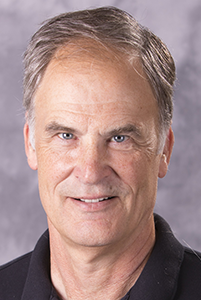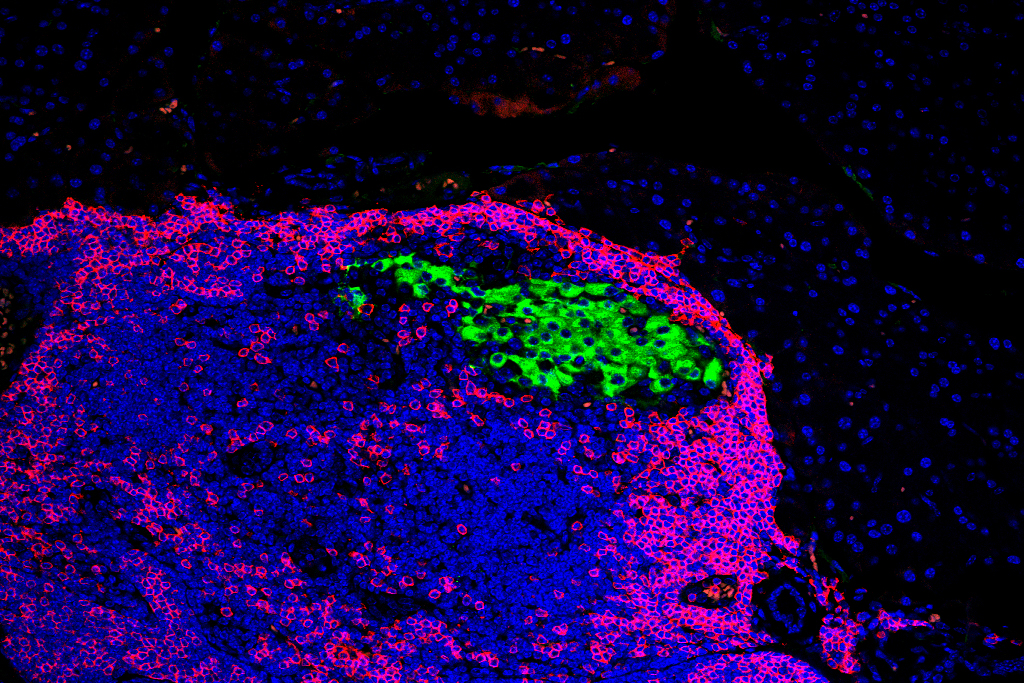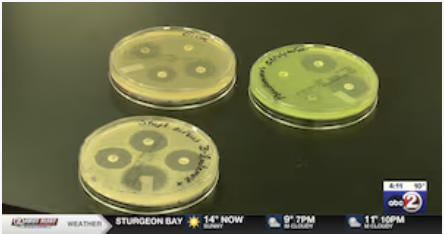Harvesting the Power of Big Data in Agriculture
Connecting with old friends? There’s an app for that. Logging your fitness goals? There’s an app for that.
Making your farm more sustainable? There, too, is an app for that.
In our technology-driven world, farmers, scientists and agricultural economists are tapping into Big Data research to stay ahead.
“Information technology has become to agriculture today what internal combustion engines were in the 20s and 30s,” says Thomas Rutherford, WID Optimization researcher and agricultural and applied economics professor at UW–Madison. “In those days, the way you made money was to be the first one to know how to use a gasoline engine. The same thing’s going on now.

Thomas Rutherford
But how do farmers acquire this type of information?
The answer: “Big Data,” a phrase that can represent trillions upon trillions of data points.
WID experts characterize Big Data by three components: volume (how big the data is), velocity (how fast the data is being collected) and variety (how diverse the data being collected is).
“With Big Data, we can come up with models that are based on experience,” says Rebecca Willett, Discovery Fellow and Optimization researcher. “And that’s how our brains work. We look around us. We learn. Every time we experience something, we store that away and refine our model about how the world works. And so the idea of Big Data is to somehow do the same thing. So every time we get more data, we want to refine our view of how the world works and we want to use it to make better predictions.”
Rob Nowak, Discovery Fellow, WID Optimization researcher and computer and electrical engineering professor, likens Big Data problems to “needles buried in haystacks kinds of problems.”

Rob Nowak
“You have enormous amounts of data, and you’re trying to find patterns in that data that may be very subtle,” says Nowak. “You have to use automated computer processing to find these hidden patterns and signals. So we’re looking for those needles in these Big Data haystacks.”
WID looked at a few ways the Institute’s researchers and collaborators are harnessing Big Data to enhance agriculture and sustainability.
The Farmers’ App
Many farmers across the Midwest struggle with two common problems: pest control and overall sustainability practices. To address these problems, Paul Mitchell, a UW–Madison associate professor of agricultural and applied economics, is developing two mobile apps that would give individual farmers greater control in helping to solve these problems.
“Every time we experience, we store that away and refine our model about how the world works. And so the idea of Big Data is to somehow do the same thing. So every time we get more data, we want to refine our view of how the world works and we want to use it to make better predictions.”
— Rebecca Willett
One app helps farmers determine when to rotate their crops. Mitchell says crop rotation is an important practice in preventing the infestation of the Bt-resistant corn rootworm, a pest that damages genetically modified corn designed to repel it. Using data from satellites and georeference technology, farmers could input the location of their field and, based on a variety of factors, the app would tell the farmer whether or not they should rotate their crops.
The other app will make building more sustainable farms simpler and easier to understand. Mitchell’s app metric can teach individual farmers what he or she can do to make farming more sustainable, showing researchers problematic practices trending among farmers in a certain area. The metric would feed from a survey with several hundred questions that farmers could answer based on sustainable farming practices, such as, “Do you sample your tissue [plant] before you apply fertilizer?” or “Do you go out and scout for insects?” Based on his or her answers, each farmer will receive a score.
Each score is farm-specific but gives researchers insight into which sustainability measures the majority of farmers are tracking and what changes can be made to better the system as a whole. The hope is the survey will be distributed every three to five years, so that farmers have the chance to make changes and see improvements.
While these particular apps are still in development, this type of technology is quickly gaining popularity across the agriculture industry.
“You drive by the field and you think, ‘Oh, they’re just out there farming,’” Rutherford says. “You don’t have a clue that they’re way beyond that.”
A picture worth a thousand data points
For most people, image recognition technology allows them to more easily tag their friends in photos on Facebook. But researchers are looking to further this technology to help farmers target weeds in their fields.
The goal is to create robotic weeders that go into farm fields and use image recognition technology to determine crops from weeds, and then proceed to kill the weed.
Michael Ferris, WID’s Optimization theme leader and computer sciences, industrial engineering and mathematics professor, says image recognition is a different type of Big Data collection. The data actually comes from individual pixels within an image, as opposed to large collections of images themselves. Researchers look to find patterns through the gradients of the pixel features, with sharp contrasts marking the boundaries of the object. Taking these data sets and prior information about image structure, they are able to create models that enhance the image and recognize its properties more easily.
Fertilizer finesse
While mobile apps and image recognition technology are seen in our daily lives, Big Data also lends itself to the development of completely new technologies.
Partnering with the USDA and colleagues in biochemistry and SoilNet LLC, Ferris is working to deploy a form of separation technology that looks to create more specialized bio-energy co-products from manure: ethanol, vegetable oil/meals, bio-diesel, and organic soil amendments and fertilizers.
With a continuous cyclical process in the creation of fertilizer, cow manure is used as fertilizer, providing crops with nutrients. Because not all necessary nutrients can be found in manure, however, extra nutrients are added to the fertilizer. Cows then eat the crops grown in the fertilizer, ingesting the extra nutrients. Their manure is again used to create more fertilizer, and the process continues.
This new technology looks to separate raw manure based on a variety of different properties, such as a specific nutrient or protein. Removing excess materials from manure will not only make for cheaper transport, but will allow farmers to purchase new fertilizers rich in a particular nutrient.

Michael Ferris
Teaching the future
While it is important for farmers to understand technology’s environmental implications, WID researchers are looking to teach these practices to an equally important audience: children.
A team led by Ferris has created two video games, Fields for Fuel and Trails Forward, in efforts to not only teach grade school children about the environment in Dane County, but also how their actions affect the environment. Drawing from real environmental data, when players, who play as either farmers, miners or loggers, do something to change the environment in the game, say, cut down a tree or build a mining plant, there is a real-time response that lets them know its effect on the environment and impact on other players.
“The aim of those gaming interfaces is a way to explore data or system interactions to actually see, in a friendly way, what are the consequences of making changes to the operation of that system and how that system changes based upon what you do,” Ferris says.
— Bridget Ryan





